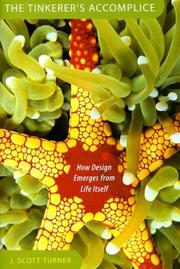Turtles, Termites, and Traffic Jams: Explorations in massively parallel microworlds by Mitchel Resnick - ISBN 0262680939 - MIT Press 1997
Motivation
Recommended by Sylvain following a discussion during Matrix III on the Sentinels potential distributed cognition and auto-organization.
Pre-reading model
Draw a schema (using PmGraphViz or another solution) of the situation of the area in the studied domain before having read the book.
Reading
- I. Foundations
- II. Constructions
- "Papert contrasts constructionism with instructionism whereas instructionism focuses on new ways for learners to construct. Both are important, But significant improvements in education are much more likely to come from advances in constructionism, not instructionism. The major challenge for educators and educational developers, then, is to create tools and environments that engage leaners in construction, invention, and experimentation. This process involves (at least) two levels of design: educators need to design things that allow students to design things." (p24)
- "The constructionist approach goes beyond hands-on in a variety of ways. In constructionist activities, students do not simply manipulate physical objects, they construct personally meaningful products." (p28)
- section Object-Oriented Programming (p43) and Parallelism (p45) lead from
- III. Explorations
- "Microworlds are always manipulable: they encourage users to explore, experiment, invent, and revise. Seymour Papert (1980) describes microworlds as <<incubators of knowledge." (p50)
- "As E. O. Wilson (1971) notes, <<The entire history of the termites... can be viewed as a slow escape by means of architectural innovation from a dependence on rotting wood for shelter>> (p315)." (p75)
- mention of Lotka-Volterra equations first discovered with Evolutionary Dynamics (p92)
- IV. Reflections
- "Some researchers who study systems talk about exogenous (external) and endogenous (internal) factors affecting the behavior of a system. In the minds of many, it seems, patterns (such as traffic jams) can be formed only by exogenous factors." (p126)
- (p134) "Guiding Heuristics for Decentralized Thinking
- Positive Feedback Isn't Always negative.
- Positive feedback often plays an important role in creating and extending patterns and structures.
- Randomness Can Help Create Order.
- Most people view randomness as destructive, but in some cases it actually helps make systems more orderly.
- A Flock Isn't a Big Bird.
- It is important not to confuse levels. Often, people confuse the behaviors of individuals and the behavior of groups.
- A Traffic Jam Isn't Just a Collection of Cars.
- It is important to realize that some objects (<<emergent objects>>) have an ever-changing composition.
- The Hills Are Alive.
- "In Sciences of the Artificial (1969), Herbert Simon describes a scene in which an ant is walking on a beach. Simon notes that the ant's path might be quite complex. But the complexity of the path, says Simon, is not necessarily a reflection of the complexity of the ant. Rather, it might reflect the complexity of the beach." (p142)
- V. Projections
See also
Exercise/Idea
Apply StarLogo and its mindset to a daily game: sudoku.
observer
display
patch
colorize per number of possible value (1 to 9)
turtles
current value
= possible value if there is only 1
possible value
= 1 to 9
get values in without yourself in
line
column
square
- alternative solutions
- construct as many grids as there can be based on the existing amount of filled cases (removing rotations)
See in NetLogo User Community Models the sudoku-solver by Zammu, 2006
Overall remarks and questions
- the motivation was older than this recommendation since I skimmed through SFI book on Swarm Intelligence years earlier. Also was interested in Multi-Agent Systems (MAS) at UTC, Machine Learning later on, web2.0 overall and the distributed "edge" projects (P2P, BOINC, botnets, ...).
- could the local optima be reach faster taking into account Wikipedia:Price of anarchy
 yet fail to explore more possibilities?
yet fail to explore more possibilities?
- i.e. is distributed and quasi-independent exploration be more costly in the short-term yet to potentially better result in the long-run or in highly dynamical environment?
- learned programming [{Wikipedia:Logo
 %28programming language%29]] in elementary school with Logo made by Seymour Papert, professor of Mitchel Resnick who subsequently made Scratch
%28programming language%29]] in elementary school with Logo made by Seymour Papert, professor of Mitchel Resnick who subsequently made Scratch
Synthesis
So in the end, it was about X and was based on Y.
Critics
Point A, B and C are debatable because of e, f and j.
Vocabulary
(:new_vocabulary_start:)
new_word
(:new_vocabulary_end:)
Post-reading model
Draw a schema (using PmGraphViz or another solution) of the situation of the area in the studied domain after having read the book. Link it to the pre-reading model and align the two to help easy comparison.
Categories
Back to the Menu
Other read books linking to the TurtlesTermitesAndTrafficJams page :
Back to the Menu
 Fabien Benetou's PIM
Fabien Benetou's PIM







